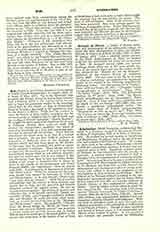

Rohault de Fleury, a family of French architects and archaeologists of the nineteenth century, of which the most distinguished member was Charles Rohault de Fleury, b. in Paris July 23, 1801; d. there August 11, 1875. After a scientific course pursued at the Ecole Polytechnique at Paris, he studied sculpture, but abandoned this study for architecture in 1825. He designed several public and private buildings which adorn one of the most artistic sections of the present Paris and was the author of the first edition of the “Manuel des lois du batiment” published by the Central Society of Architects (Paris, 1862). The last years of his life he devoted to religious archaeology and published the important results of his studies in the following magnificently illustrated works: “Les instruments de la Passion”, Paris, 1870 (see Cross); “L’evangile, etudes iconographiques et archeologiques”, Tours, 1874; “La Sainte Vierge”, Paris, 1878; “Un Tabernacle chretien du Ve siecle”, Arras, 1880; “La Messe, etudes archeologiques sur ses monuments”, Paris, 1883-98. Some of these works were published after his death by his son George (1835-1905) who was himself a prominent archaeological writer. The latter’s works treat of Italian art-monuments: “Monuments de Pise au moyen age”, Paris, 1866; “La Toscane au moyen age, lettres sur l’architecture civile et militaire en 1400”, Paris 1874; “Le Latran au moyen age”, Paris, 1877.
N. A. WEBER

